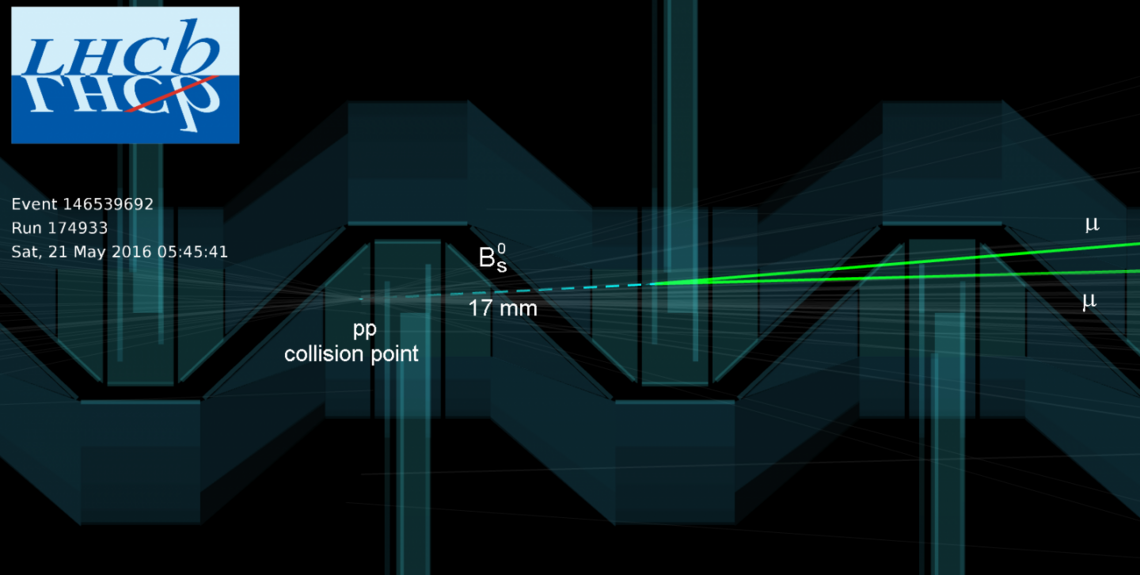The Standard Model is holding strong after a new precision measurement of a rare subatomic process.
For the first time, the LHCb experiment at CERN has independently observed the decay of the Bs0 particle—a heavy composite particle consisting of a bottom antiquark and a strange quark—into two muons. The LHCb experiment co-discovered this rare process in 2015 after combining results with the CMS experiment.
Theorists predicted that this particular decay would occur only a few times out of a billion.
“Our measurement is slightly lower than predictions, but well within the range of experimental uncertainty and fully compatible with our models,” says Flavio Archilli, one of the co-leaders of this analysis and a postdoc at Nikhef National Institute for Subatomic Physics. “The theoretical predictions are very accurate, so now we want to improve our precision to see if our measurement is sitting right on top of the expected value or slightly outside, which could be an indication of new physics.”
The LHCb experiment examines the properties and decay patterns of particles to search for cracks in the Standard Model, our best description of the fundamental particles and forces. Any deviations from the Standard Model’s predictions could be evidence of new physics at play.
Supersymmetry, for example, is a popular theory that adds a host of new particles to the Standard Model and ameliorates many of its shortcomings—such as mathematical imbalances between how the different types of particles contribute to subatomic interactions.
“We love this decay because it is one of the most promising places to search for any new effects of supersymmetry,” Archilli says. “Scientists searched for this decay for more than 30 years and now we finally have the first single-experiment observation.”
This new measurement by the LHCb experiment combines data taken from Run 1 and Run 2 of the Large Hadron Collider and employs more refined analysis techniques, making it the most precise measurement of this process to date. In addition to measuring the rate of this rare decay, LHCb researchers also measured how long the Bs0 particle lives before it transforms into the two muons—another measurement that agrees with the Standard Model’s predictions.
“It's gratifying to have achieved these results,” says Universita di Pisa scientist Matteo Rama, one of the co-leaders of this analysis. "They reward the efforts made to improve the analysis techniques, to exploit our data even further. We look forward to updating the measurement with more data with the hope to observe, one day, significant deviations from the Standard Model predictions."

Event display of a typical Bs0 decay into two muons. The two muon tracks from the Bs0 decay are seen as a pair of green tracks traversing the whole detector.


